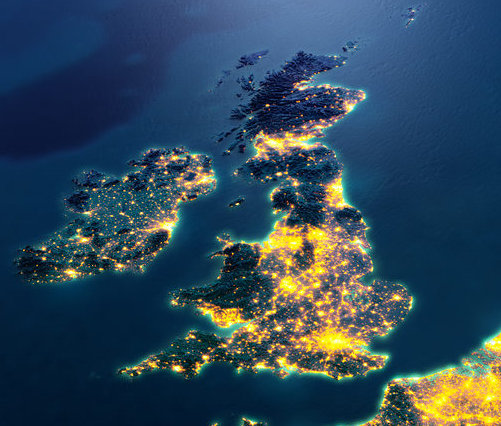Getting outside is not just about walking, running, cycling etc, it is also about just getting outside for the fresh air and the view. One aspect of this that is on the ascendancy is star gazing. Not necessarily astronomy but just being able to walk or camp out under a star laden sky. To be able to enjoy the sheer majesty and beauty of the night sky.
However, we live in a society reliant on artificial light and star gazing in towns and cities as very restrictive or impossible. The amount of light pollution has reduced the areas where we can truly wander under the stars. Today less than 10% UK population can enjoy a view of our own galaxy, the Milky Way. This is where the Dark Sky Projects came into their own.

What are Dark Skies?
The Oxford English Dictionary defines it as:
Places where the darkness of the night sky is relatively free of interference from artificial light.
To help overcome this problem and restrict the expansion of the light pollution, Dark Sky Reserves have been created in regions of the UK that:
- are away from the worse of the light pollution
- provide good, unrestricted views of the sky
- have good public access, including firm ground for wheelchair users and are freely accessible at all times
These sites have been divided into two different ratings:
- “Orion” sites. At these sites, the seven main stars in the winter constellation Orion are visible to the naked eye. Typically, this means away from, or shielded from, bright lights such as street lights, security lights or approaching car lights.
- “Milky Way” sites. At these sites the Milky Way is visible to the naked eye. They are much darker sites found only in more rural areas.
For further details visit

Where are Dark Sky Reserves?
There are 1000’s of ‘Orion’ Sites across the UK. These could be near where you live, if you can get away from bright lights such as street lighting. That could be in your back garden, a local park, or getting out of town altogether.
For the ‘Milky Way’ then we have some of the best in the world here in the UK. Of the 13 International Dark Sky Reserves in the world, four are in the UK:
- Brecon Beacons National Park
- Exmoor National Park
- Snowdonia National Park
- South Downs National Park
In addition, Tomintoul and Glenlivet in Cairngorms National Park has been designated one of only 63 Dark Skies Parks in the world!

Most of the other UK National Parks have been given the designation of Dark Sky Discovery Site. These include:
- Lake District National Park
- Northumberland National Park
- North York Moors National Park
- Peak District National Park
- Pembrokeshire Coast National Park
- Yorkshire Dales National Park
For further details visit

Dark Sky Festivals
Dark Skies festivals are located across our National Parks and are about discovering, learning and enjoying the dark and the stars you can see as a result. They are not just about star gazing or astronomy but getting out for an activity such as cycling, walking, running or caving at night.
There are events for families, first-time stargazers and those wishing to expand their knowledge or astrophotography skills further. The National Parks work with local astronomy clubs to help you discover the wonder of the night skies above your National Parks.
The National Park in which I am lucky enough to live – South Downs National Park has its next Dark Sky Festival between the 7 – 23 February 2020. The Festival celebrates their International Dark Skies Reserve designation with star parties, talks, observations and other family activities.
For further details visit

As we approach the shortest day of the year (longest night) on 22 December and the official start of Winter, it is an ideal opportunity to get outside and look up. Most people in the UK will live within 1 hours drive of a National Park and the Dark Skies that they offer. You do not have to stay out all night but make an evening of it, stopping off for a late supper on the way home.



